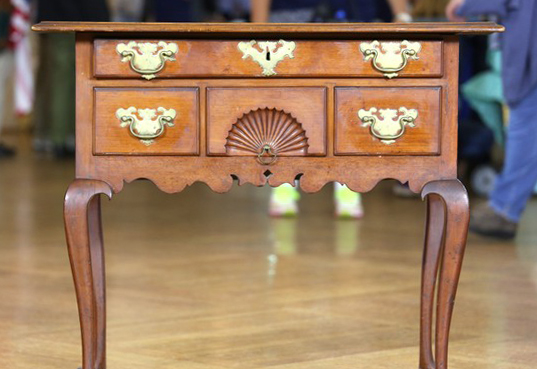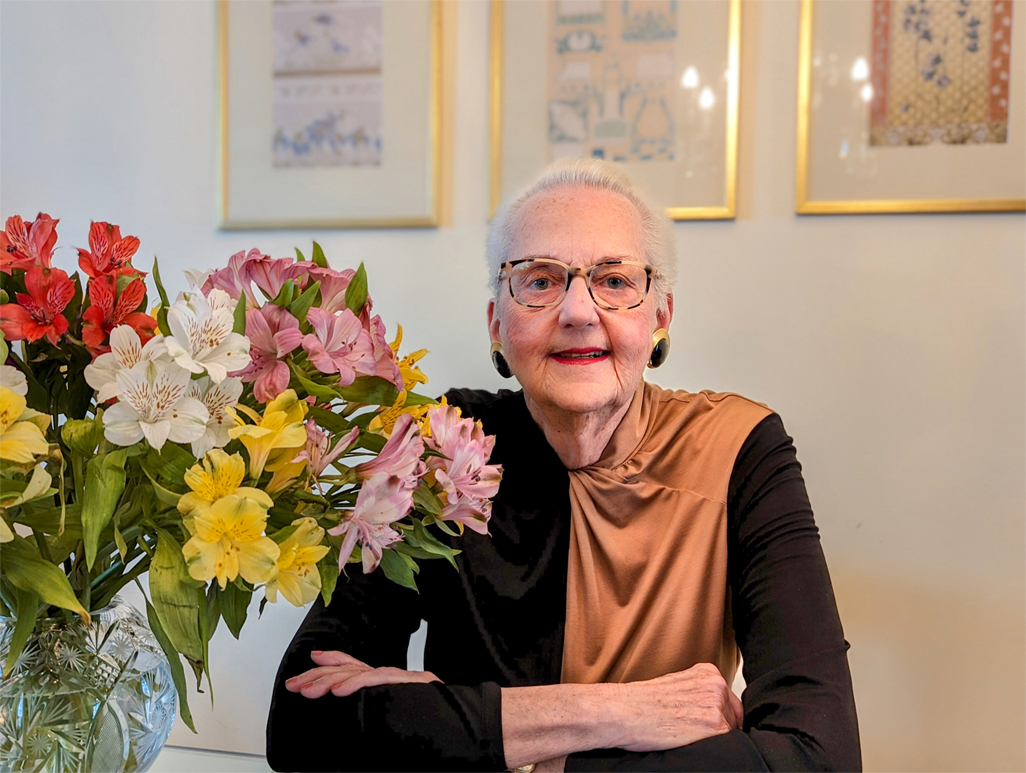APPRAISALS: THE ANTIQUES ROADSHOW WAY
By Pamela Bardo
Each week, according to Nielsen data quoted by executive producer Marsha Bemko, the television program Antiques Roadshow is watched in North America on PBS by over 8 million people. The show is part adventure, part history lesson, and part treasure hunt. Reality TV has been around for a long time, and this is one of the first shows that peeks into the lives of others. On Antiques Roadshow one sees trinkets held onto sometimes worth great money, puzzling collectibles, and family heirlooms.
The show started in Great Britain in 1979 and the rights to produce were bought by an independent producer in Boston in 1997. It was not an immediate success in America. Today, the show has six tapings per year resulting in 26 – 28 episodes. Organizers see 7,000 – 10,000 items per event. There are upwards of 4,500 people randomly selected online for free tickets to each event. Each person selected to come to an event is permitted to bring two items for a free verbal appraisal, whether selected to be featured on camera or not. Only about 40 items out of a pool of 6,000 make the cut featured on each episode.
The events or episodes were traditionally held in large convention centers. The venues expanded to include historic sites like Churchill Downs, Louisville, and Ca’ d’ Zan, Ringling Museum, Sarasota and most recently the out-of-doors which has met with much disfavor. The attendees are local residents. Attendees are not permitted to bring stamps, coins, motor vehicles or scooters, tools, fossils, and more. They are allowed to submit photographs in advance of massive pieces of furniture and if the committee of experts approve it, the production crew will move it for free within a 60 mile radius of the venue. Also, it is interesting to note that clothes with logos or brand names on attendees are not allowed on camera as it would require clearance to display.
How do items get chosen for airtime? It always appears that the presentation of an item on camera is because of its beauty, rarity, historical importance, value relative to the item, or uniqueness. It is not so. According to producer Adam Monahan for an item to be featured on airtime it must be “cool and totally entertaining regardless of appraised value.” According to executive producer Marsha Bemko, inclusion on air involves “an item with an intriguing history, a captivating owner’s story, a great story.” The pool of experts – and not the producers – make the decision. “The merely valuable is the least likely,” Bemko says. “The stories must appeal,” says producer Adam Monahan.

Massachusetts 1760 Dressing Table
Some of the items selected for viewing in the recent past are a Westerner Cowgirl Outfit with Boots from 1949; Coca-Cola 1942 Advertising Sign; Real Photo Boxing Postcards; Inscribed 1st Edition “Helen Keller’s Journal”; American 1840’s Folk Art Portrait Painting of a Little Girl; Brass Sleigh Bells Circa 1900; Massachusetts 1760 Dressing Table. The most valuable item ever appraised by Antiques Roadshow before 2021 was a Swiss Pocket Watch from 1914 brought in by an Air Force Vet who purchased it at a house sale in 2004 for $345.97. Antiques Roadshow appraised it that year for $250,000. It was appraised in 2016 for $1.5 million.

1914 Patek Philippe Pocket Watch
What is the story on the experts? Well, they are regulars from various parts of America, mostly East Coast, who work for auction houses, are fine and decorative arts gallery dealers, and a couple of independent appraisers who also buy and sell artwork. They do not get paid for their time or expenses for episodes on Antiques Roadshow. They are hugely successful, however, in bolstering their profile in the antiques industry and attracting appraisal and consulting business for themselves after the episode has aired. For nearly all the regulars, Antiques Roadshow appears as a feature on their websites. One expert has even fashioned a full-page caricature image of himself on the show, examining treasures with a magnifying glass. Rarely do they meet the national appraisal credential standards as discussed in my column in July CCM.
It may appear that the expert is all-knowing and facile with the subject at hand. What the TV viewer does not know is that behind the scenes are banks of computers with every known price database hooked-up, scores of reference books with jewelry, porcelain, and silver marks and more, and a full compliment of expert opinions ready to weigh-in on a query. The on-air appraiser is never speaking off the cuff.
Also, what the TV viewer should remember when absorbing this show and comparing the items with ones in their own home, is that we don’t know if the value given is for a Replacement Value for insurance coverage or a Fair Market Value used when selling. We don’t know the date or place of the valuation. Is the appraisal value given for the city of the venue or the city the appraiser is from or from international auction records taken from one of the databases? Some of the cities Antiques Roadshow has visited in the past are Akron, OH; Atlantic City, NJ; Boise, ID; Bretton Woods, NH; Des Moines, IA; Miami Beach, FL; San Antonio, TX; and Wichita, KS. If geography is a factor in valuation – as the three national appraisal societies that test and certify say it is – then the valuations must consider the market activity in the city in which the venue is held. Does the value of an item in a small city like Boise, ID have any bearing on the value of that item sold in large city like Chicago?
Do the experts make mistakes? In 2016, Appraiser Stephen Fletcher valued a disfigured face on a jug a “Collectible Pottery Late 19th/Early 20th Centuries” valued at $30,000. – $50,000. The owner bought it from an estate sale for $300. As it turns out, a friend of the artist alerted the artist to its appearance on TV. It was a 1970’s Oregon high school art project. Fletcher maintained it was still valuable and that he was right about that but reduced his valuation to $3,000. – $5,000.
So, sit back with your TV next Monday night at 8PM with the millions of others and watch the steady stream of objects with fascinating stories delight you. Let Antiques Roadshow prompt you to get a real, certified appraisal on that piece that’s been sitting around that you’ve always wanted to be sure about (see July CCM). With Antiques Roadshow, just realize that you are not getting an appraisal, just entertainment! (Need a referral to a certified appraiser? Contact me at ppbardo@bardoappraisals.com.)







